Odd Ends
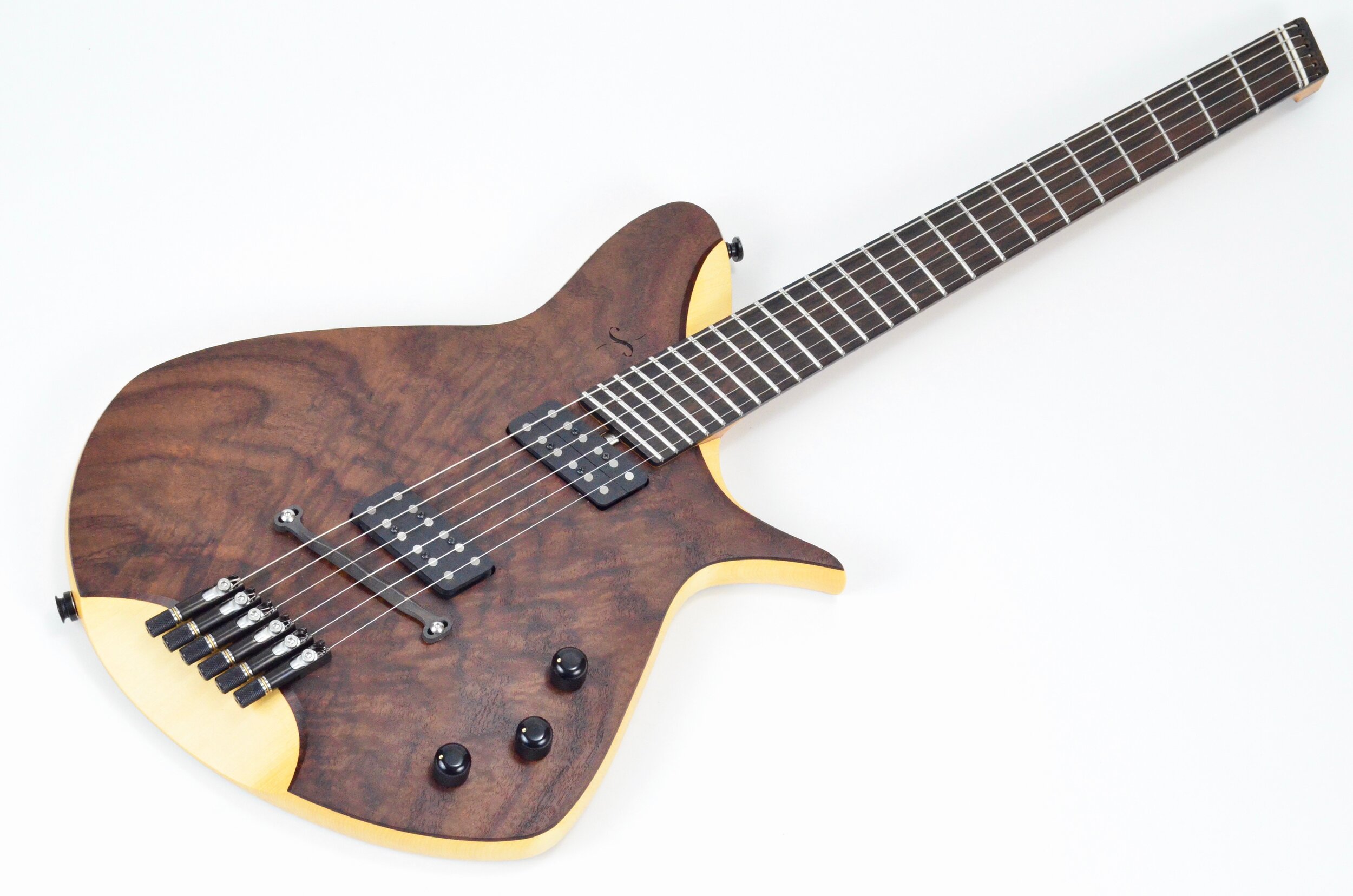
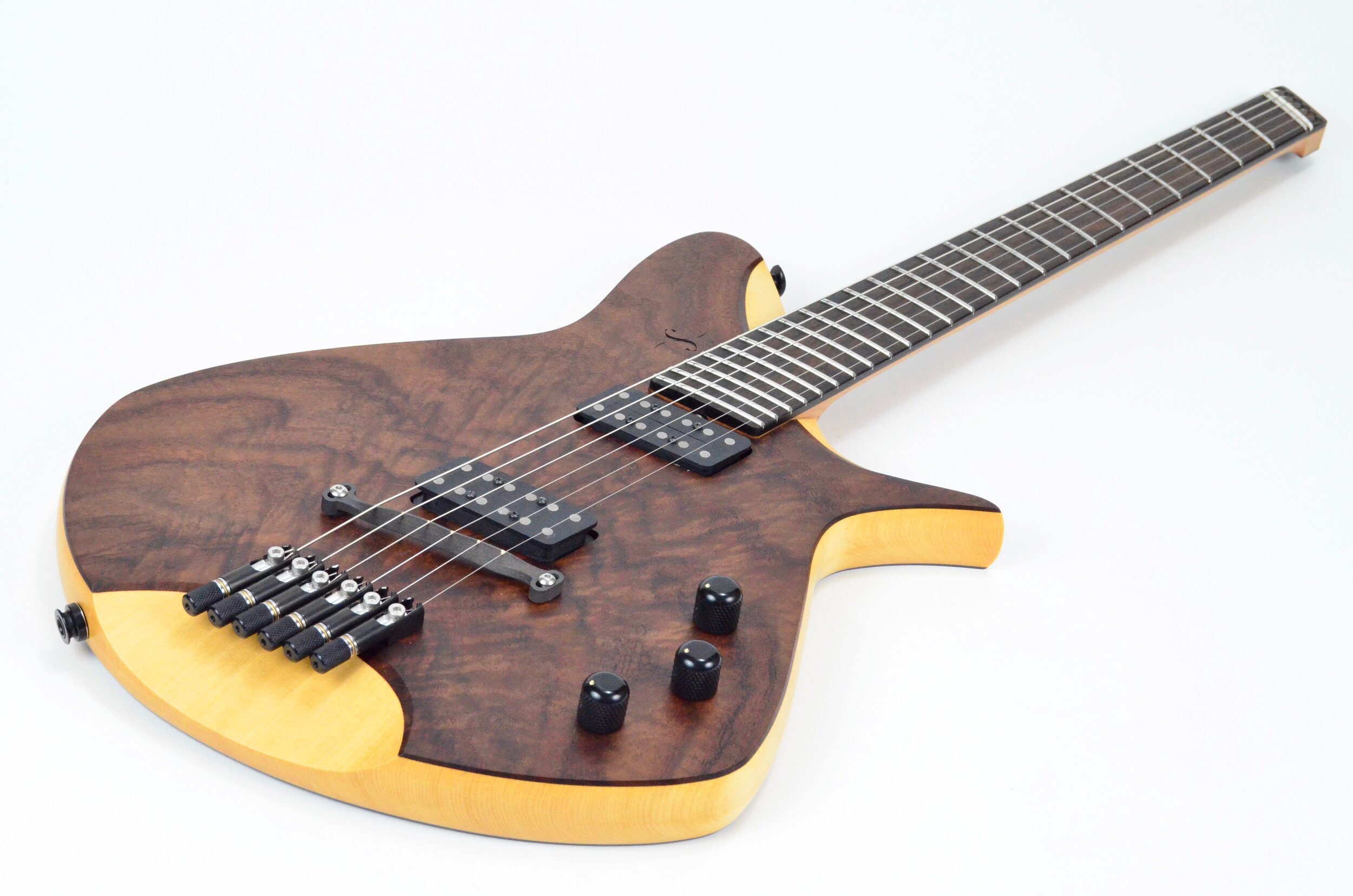
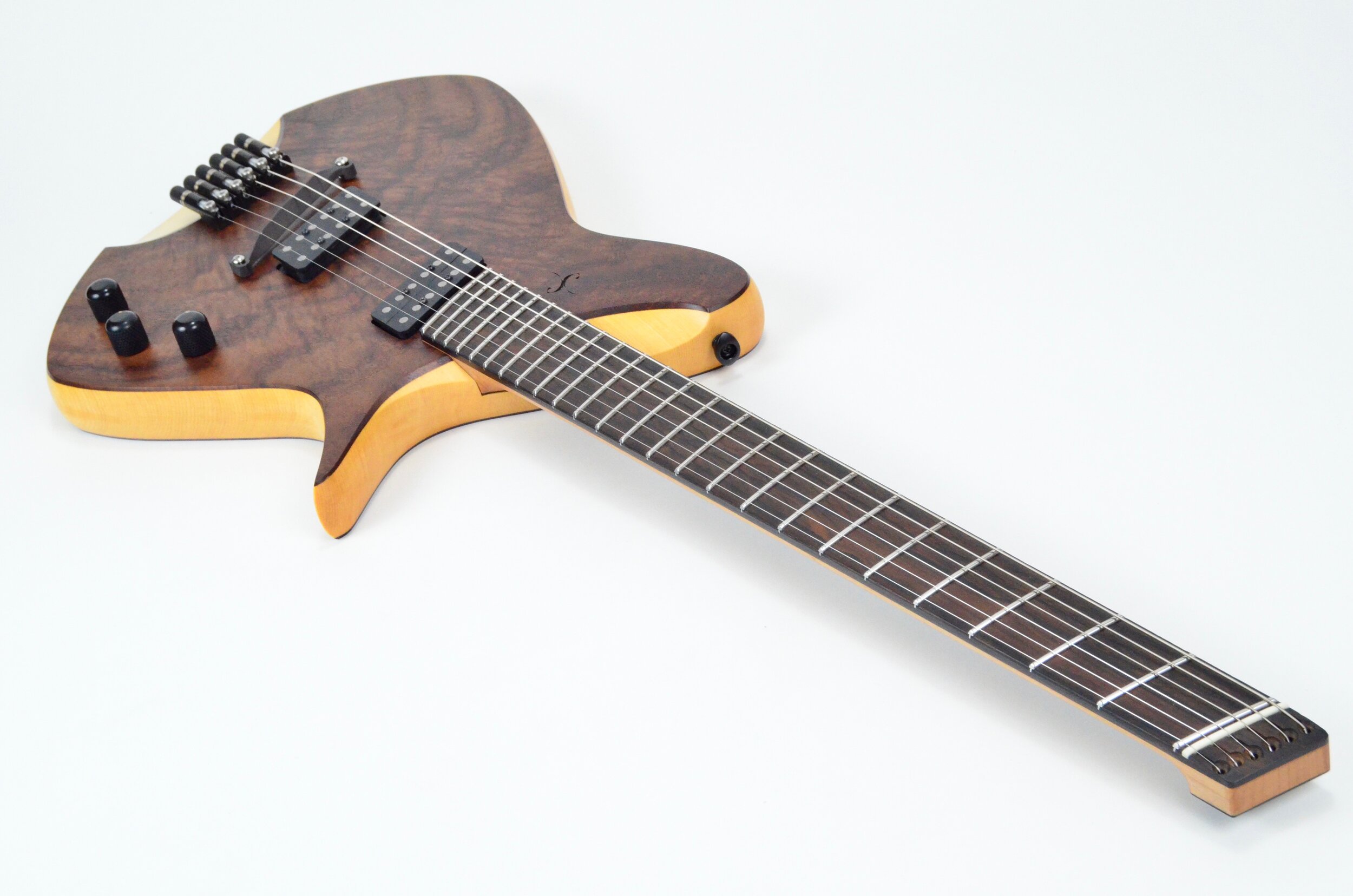
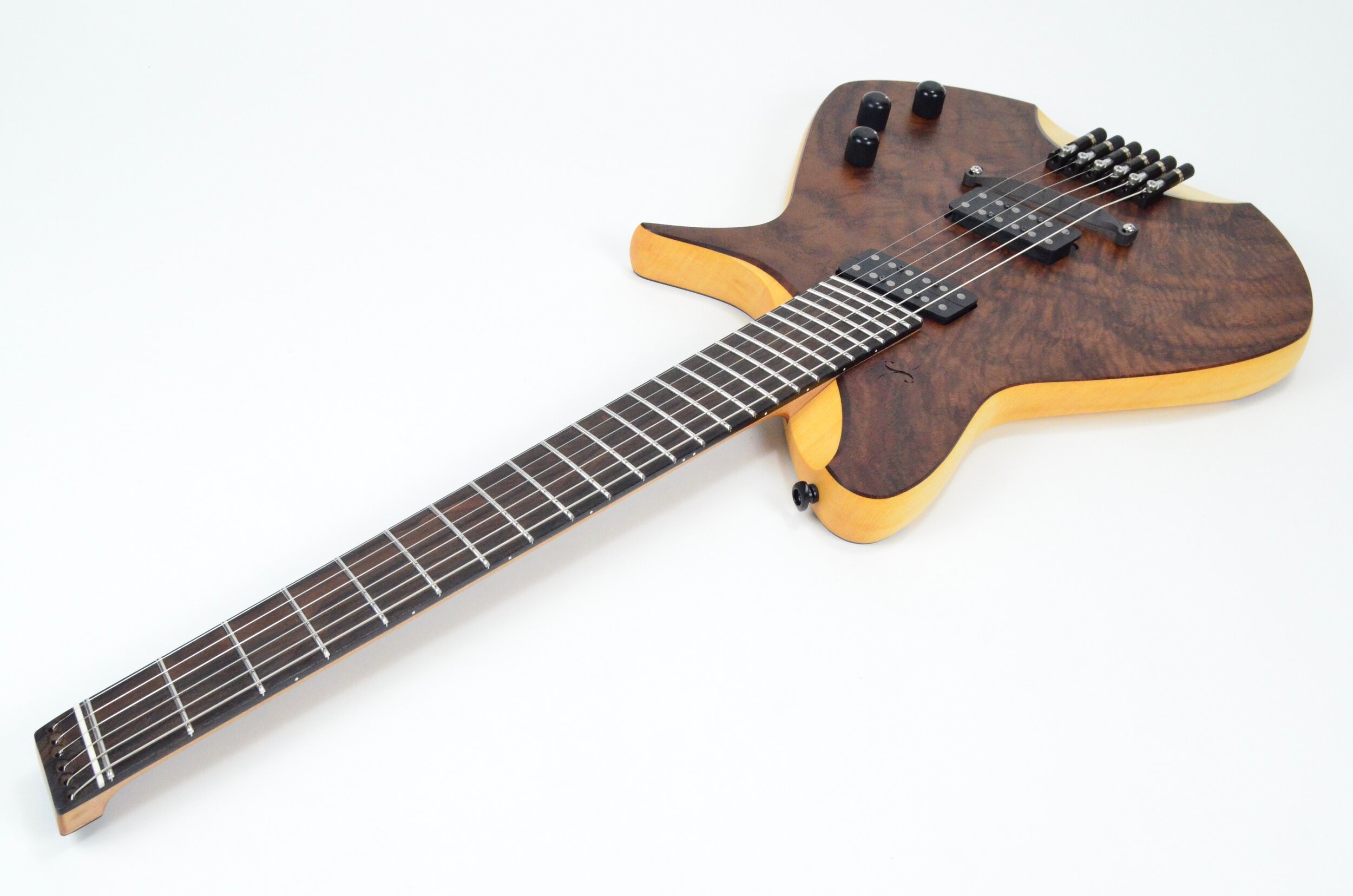
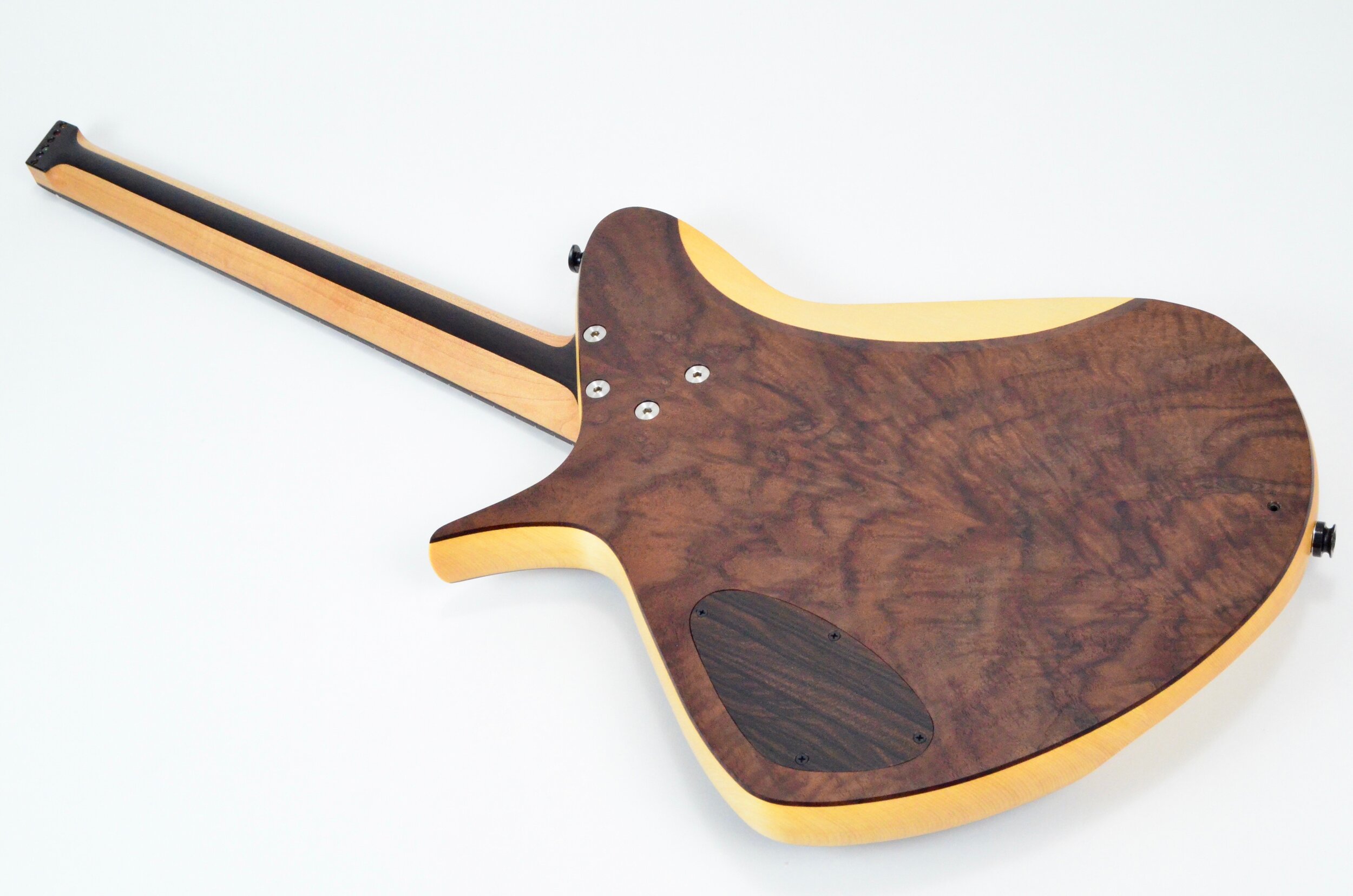
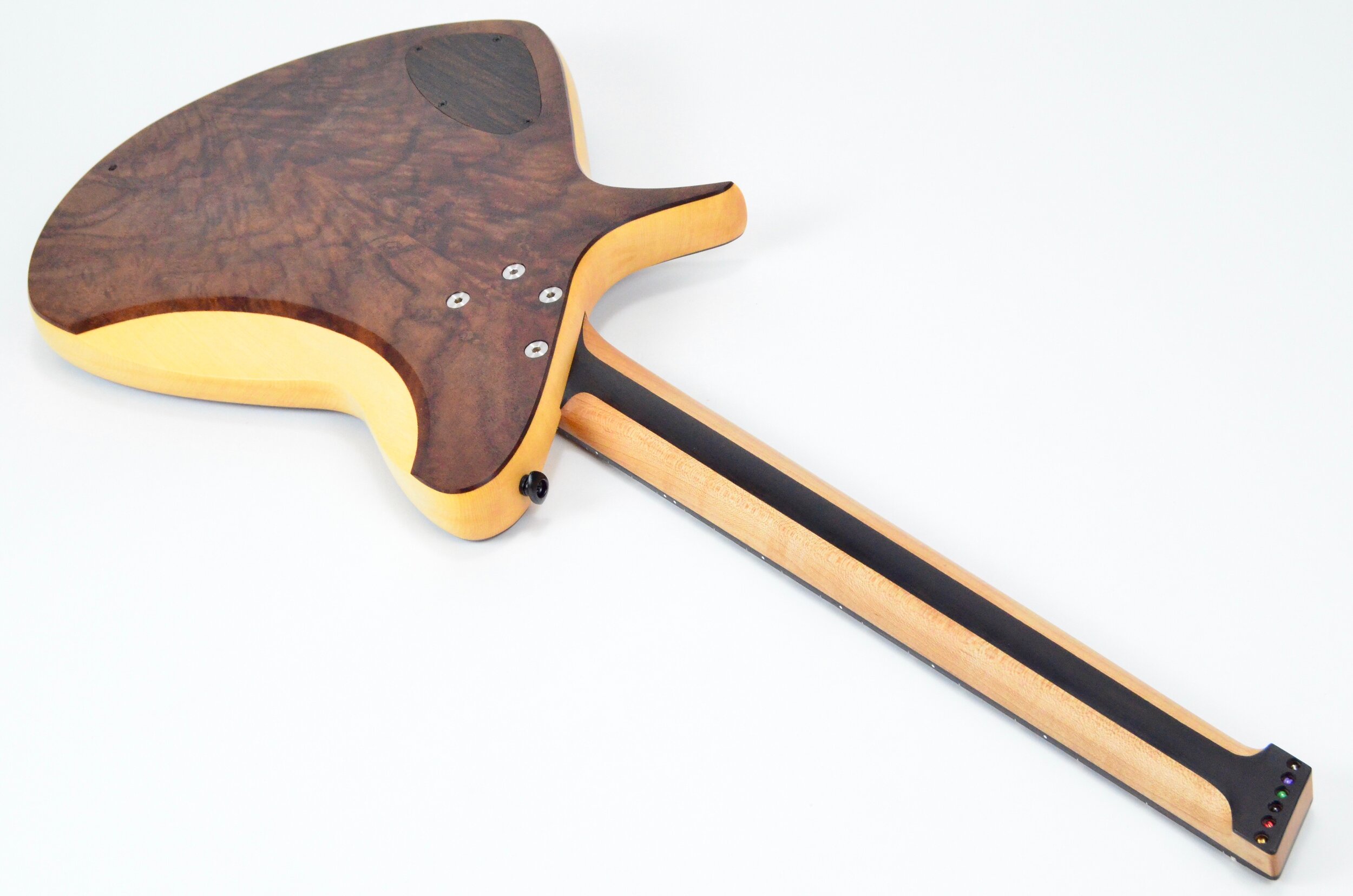
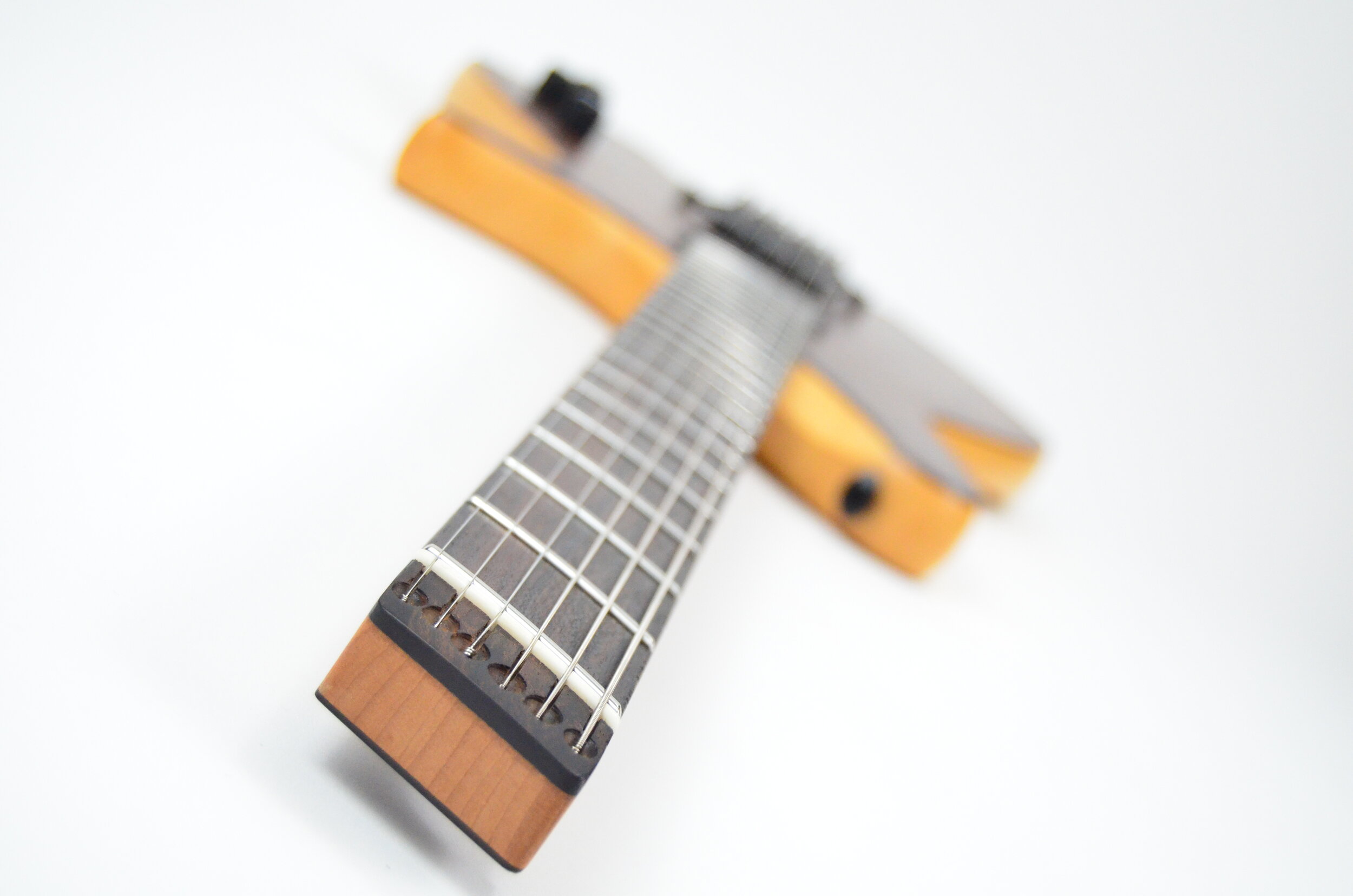
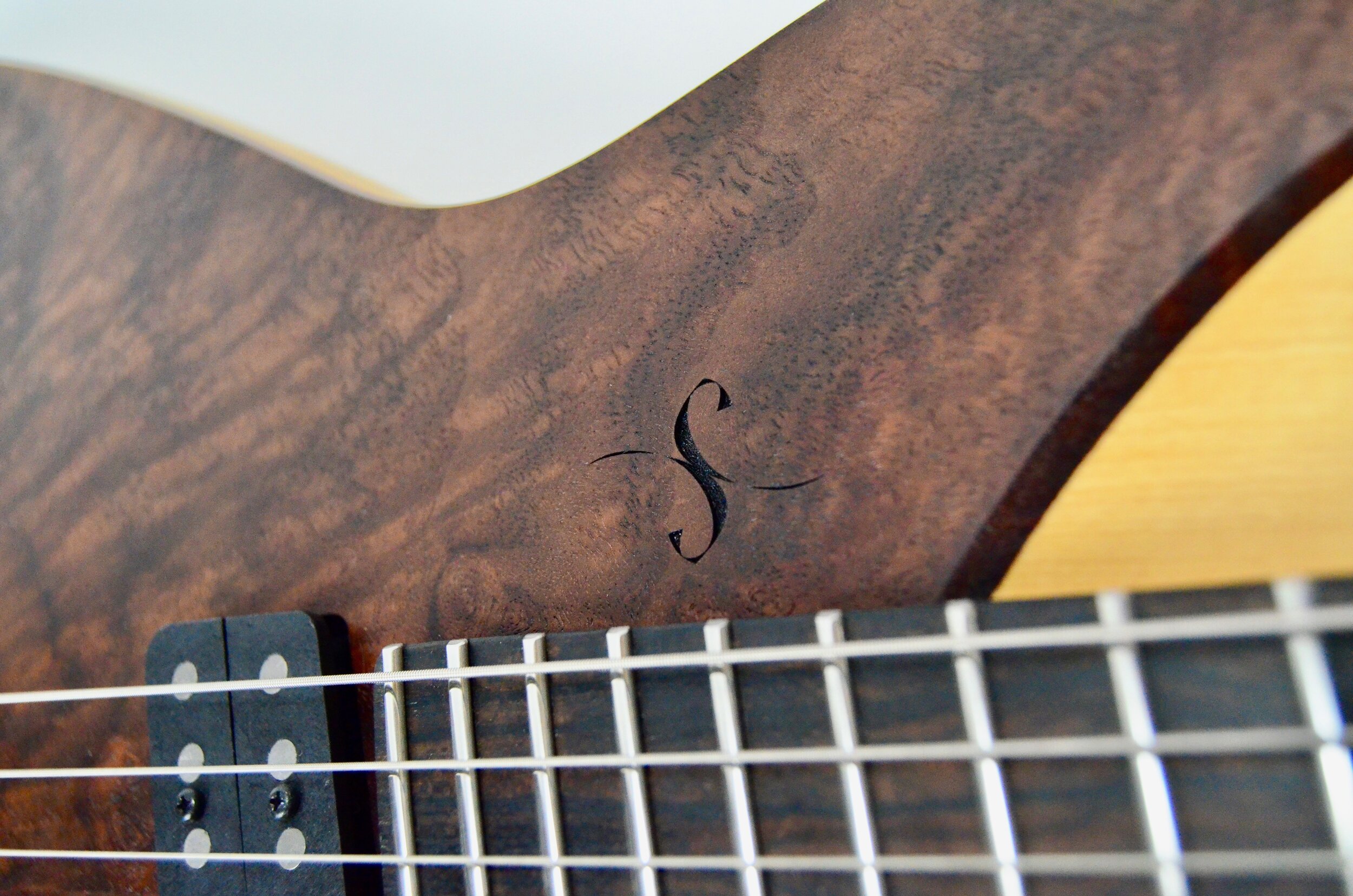
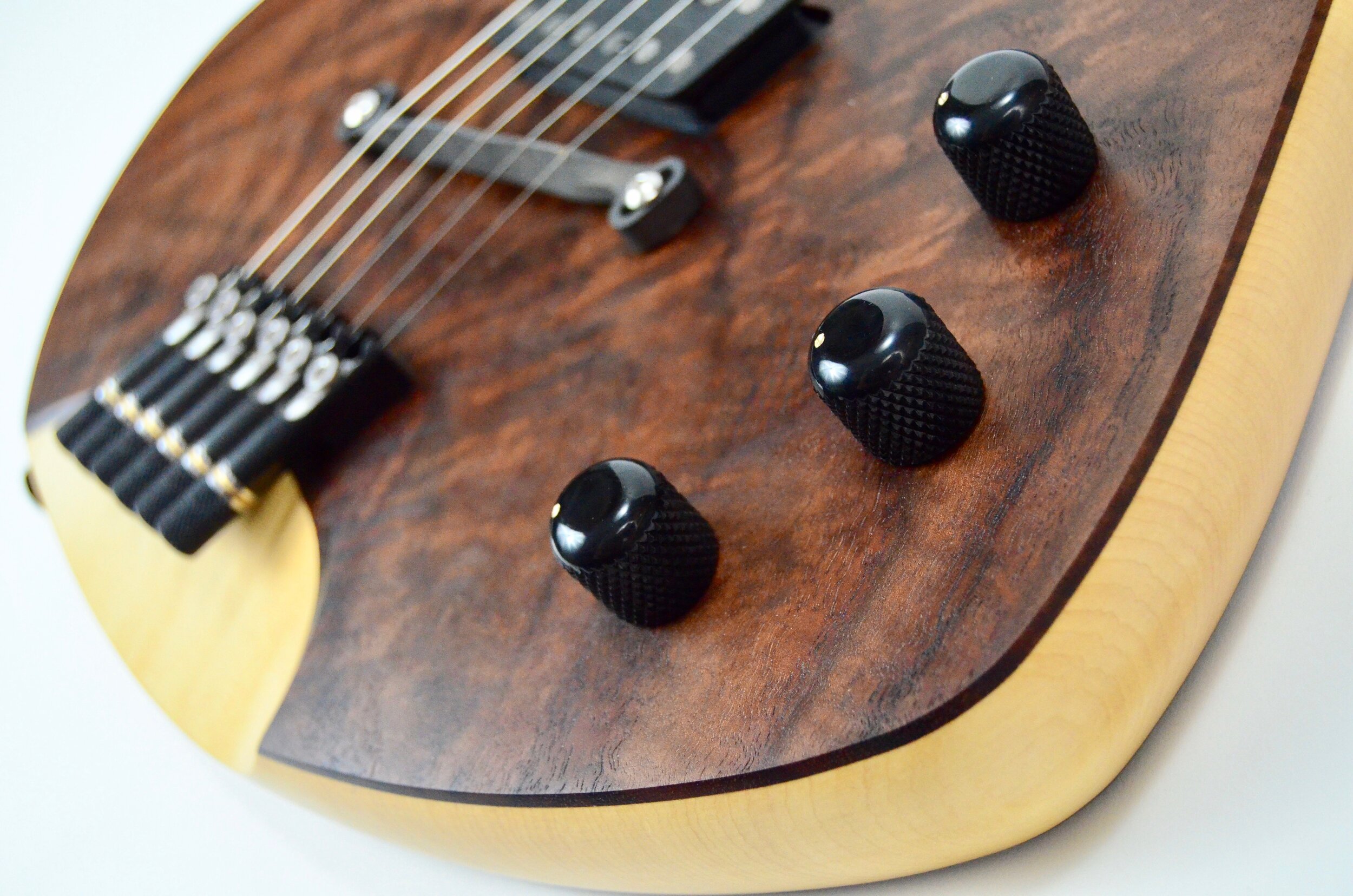
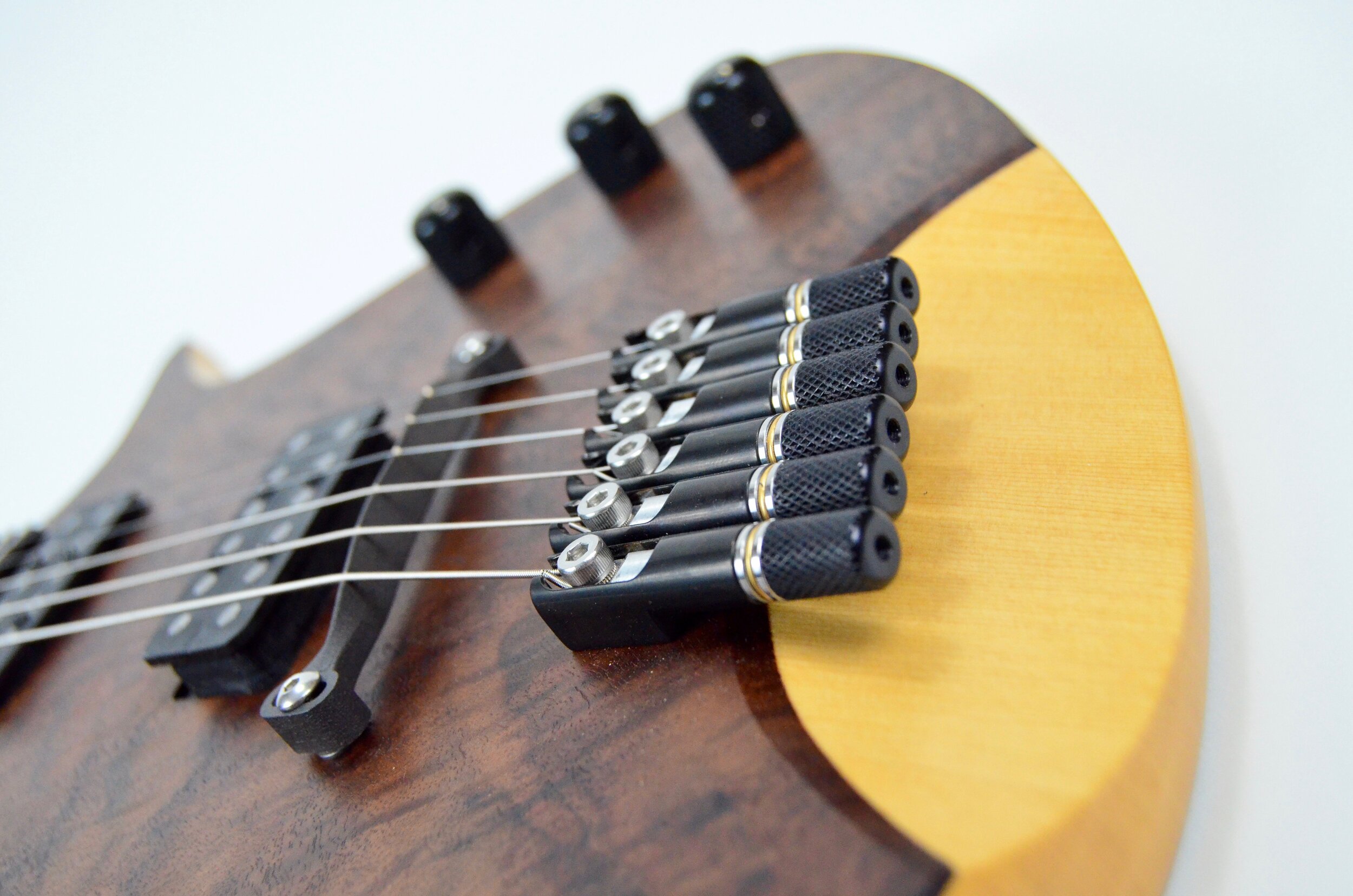
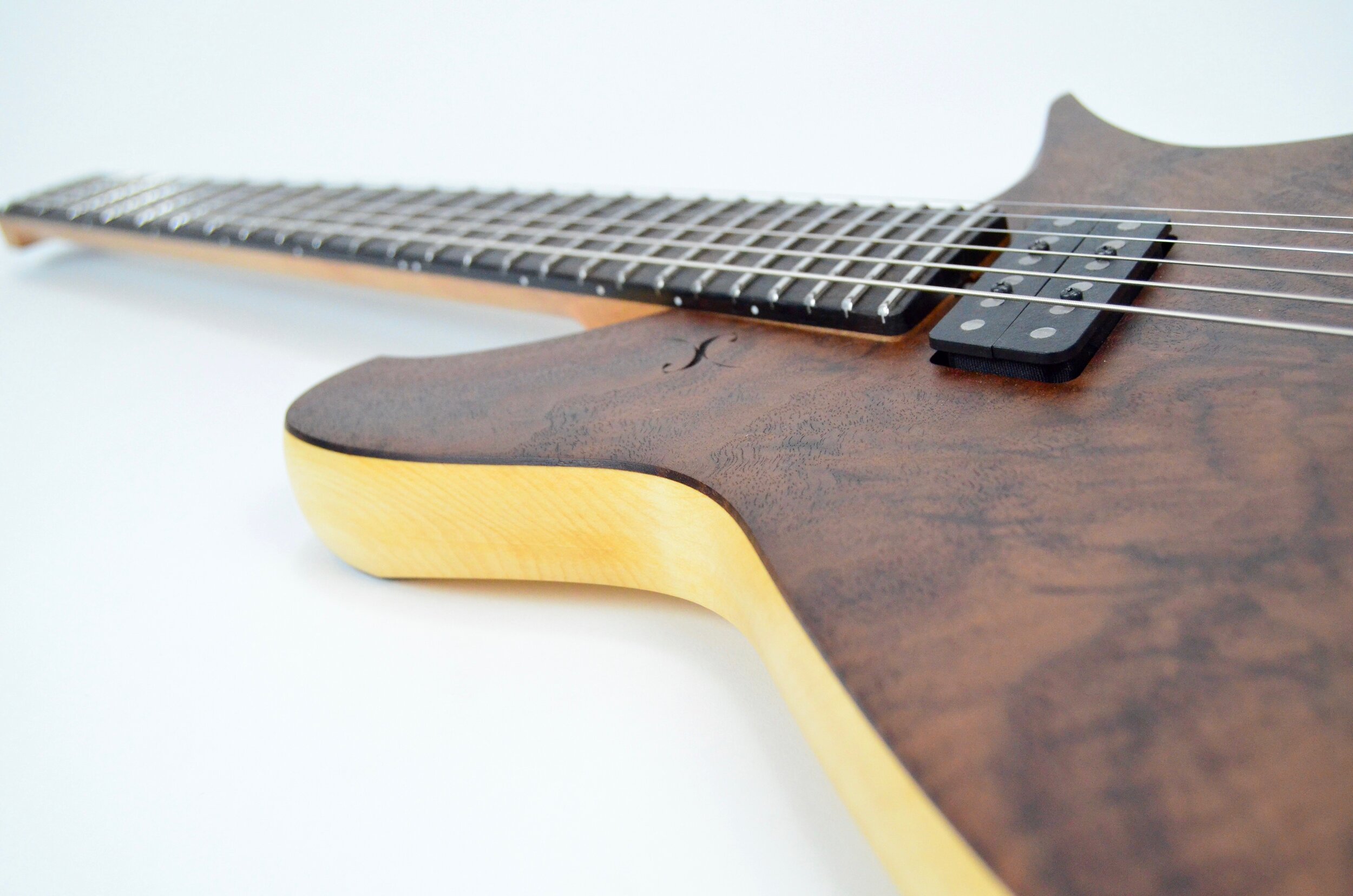
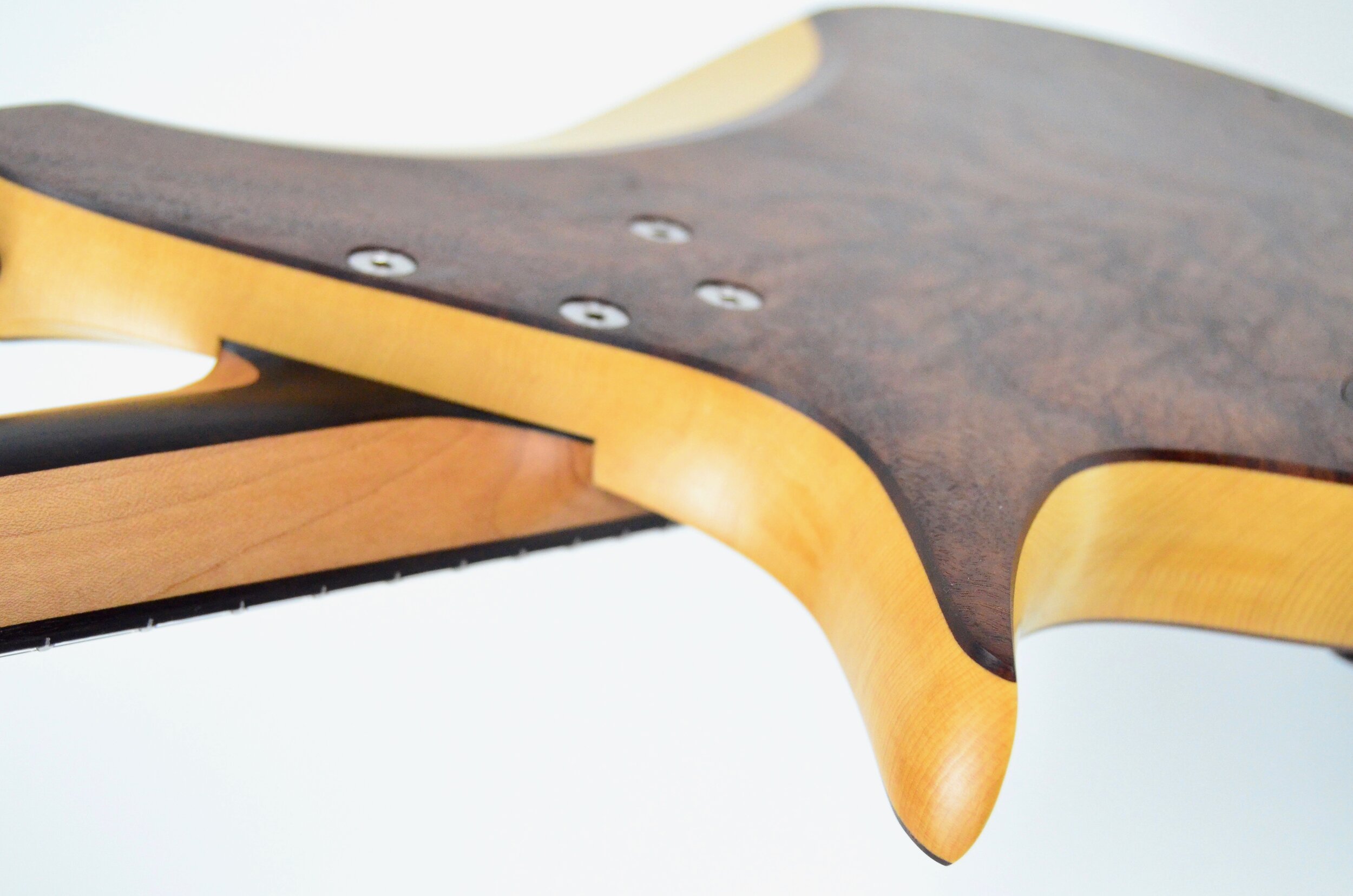
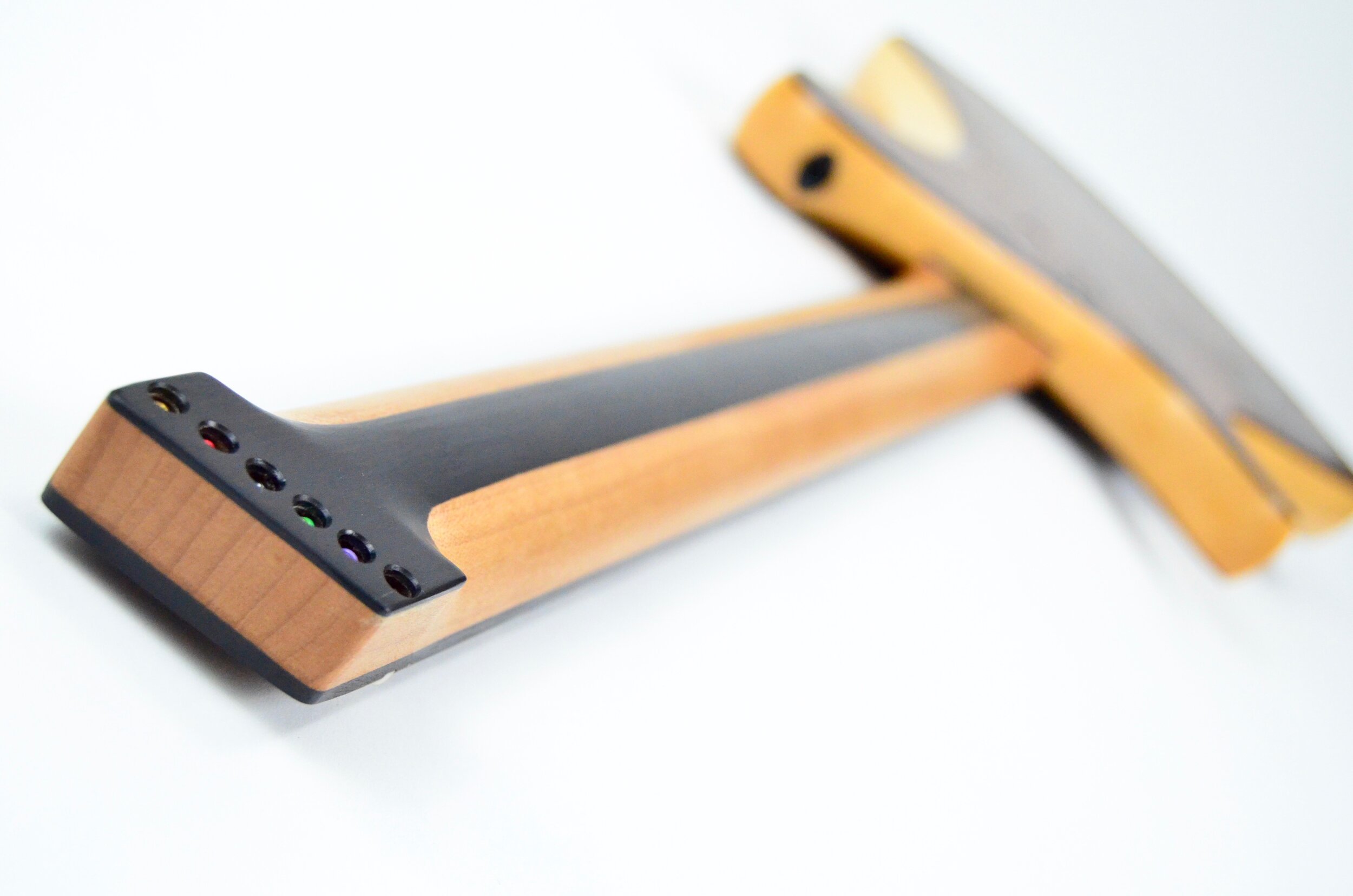
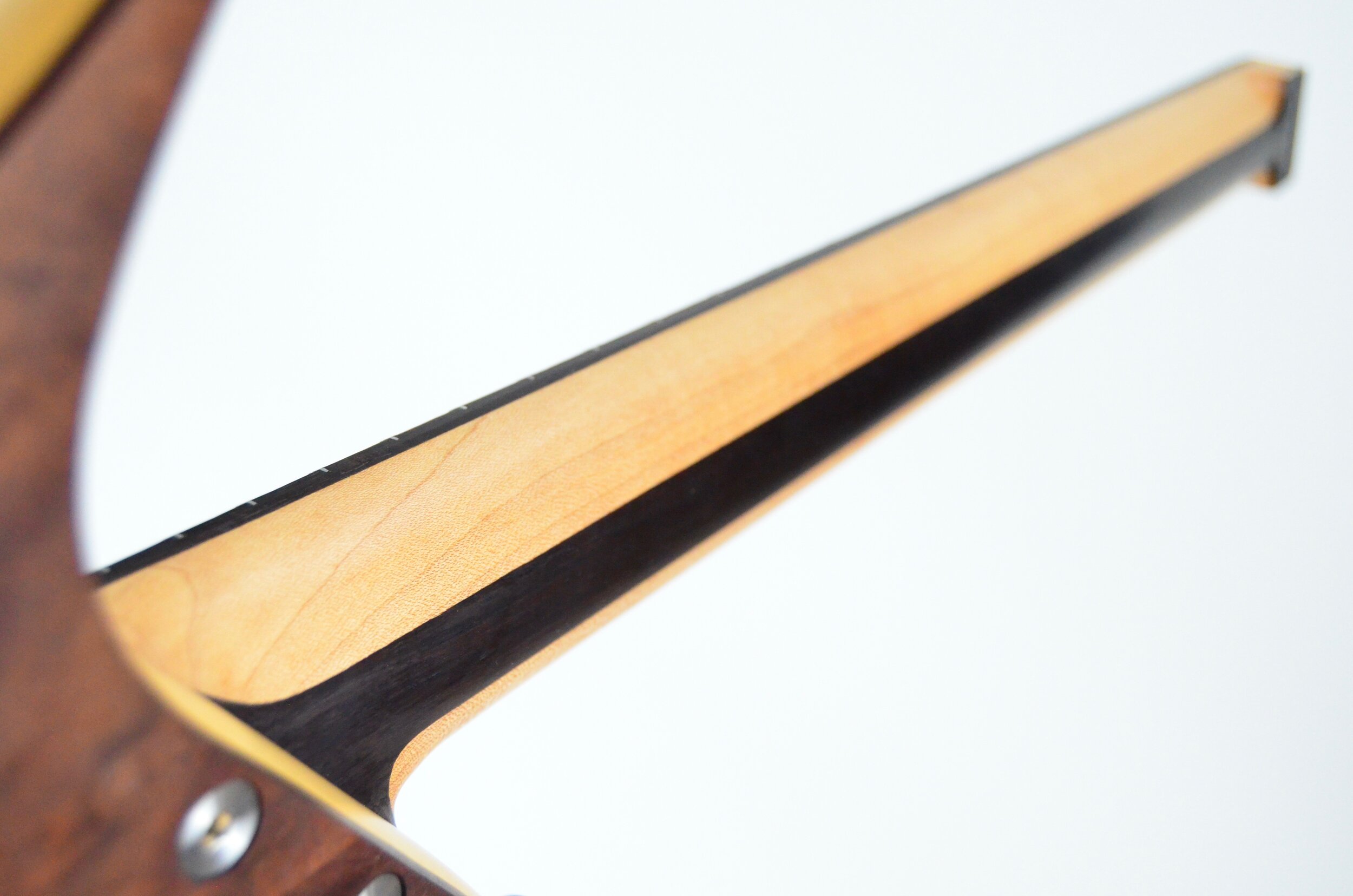
Every luthier has a drawer full of parts and pieces that, for one reason or another, never made it onto a guitar. Once you collect enough though, the problem can solve itself! That was the genesis of Odd Ends.
It started with a spare 3-d printed metal bridge, an orphaned neck, a rotary selector switch, and the last set of an old production run of wrap-lock tuners. Of course, then I got a little bit carried away…
I had a lovely slab of feather-figured claro walnut that I was looking for an excuse to use. A carefully chambered yellow cedar body core was the perfect match, stable and delightfully resonant. The neck is nominally maple, but ziricote on both the front and back surfaces make for a unique look and terrific stiffness.
The multi scale neck deserved a bespoke set of pickups, angled to match. So I called local genius JD Guitarworks, who created a unique and very special set for me. They are constructed like single-coils, but paired into a humbucking configuration. When run through the six-way selector switch, each pickup can be played as a full humbucker, split as a single coil, or combined with one coil from the opposite pickup.
In a change from my usual habits, this one has a master tone control and well as a master volume. A dual-action truss rod enables perfect playability with any tuning or string gauge, and of course the jumbo stainless steel frets should hold up for many years of enjoyment.
